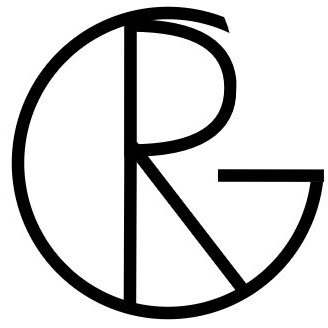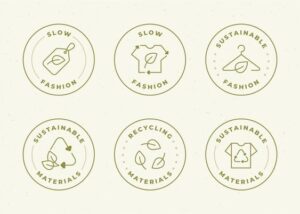One of my favorite podcasts on Spotify is the Business of Fashion. It is, as they describe it on their website, “a weekly audio episode presenting thoughtful editorial stories and fashion-oriented perspectives in a fresh way”. On the podcasts, current conflicts, challenges, and topics are discussed with different specialists. An example is the podcast ‘Ukraine: How creativity is breaking through the darkness’ where former fashion director of vogue Julie Pelipas and founder and editor-in-chief of editorial platform 1 Granary Olya Kuryshchuk discuss how creativity has proved to be a source of resilience for Ukrainians. Another, very different, example is the podcast ‘how Harry Styles built a nail polish empire’. As you can see, the podcast is very diverse, and it provides a wide range of topics.
I love the podcasts because it highlights aspects and discussion on fashion and the fashion industry that are usually rarely touched upon. Additionally, it also provides personal insights into essential topics, such as the podcast mentioned above on the Ukrainian war.
In this blog post, I want to discuss one of the Business of Fashion podcasts. Specifically ‘Greenwashing, it’s time to call in the refs’.
In this podcast, Tariq Fancy, a former Chief Investment Officer of sustainable investing, Maxime Bédat, director of the New Standard Institute, Baroness Margaret Omolola Young, activist and a member of Britain’s House of Lords, and Ken Pucker, former chief operating officer of Timberland speak with BoF’s chief sustainability correspondent Sarah Kent on how government regulation is necessary in order to create a more sustainable fashion industry.
In the podcast, they argue that sustainability initiatives should be made mandatory by the governments because companies and fashion brands are well past self-regulation. The fashion industry is essentially painting itself green through the use of different words like eco-friendly, sustainable, and eco-conscious, however, it lacks actual results.
And it is true. For years, we let the fashion industry regulate itself. And what did we get? Recycled packaging, sustainable action plans, and many, many labels that should convince us of how sustainable the brand is.
But to no avail, because the industry is only increasing and becoming more polluting every year. According to the fashion on climate report by McKinsey & Company the GHG emissions that the fashion industry will emit in 2030 will rise by a third of the current emissions to 2.7 billion tonnes if no action is taken. Furthermore, the production of the apparel industry is expected to grow from 53 million tonnes of clothing yearly to 160 tonnes.
And the environment is not the only victim. Garment workers around the globe continue to suffer from unhealthy and unsafe working conditions. Even child labor is still a shocking but common occurrence in the fashion industry.
It is not only the fashion brands, even though they play the biggest role in the detrimental impact of the fashion industry. In this current day and age, social media use is at an all-time high, which has sadly led to heightened consumerism.
As Good On You says, “industry action and collaboration is crucial”, but so far there has been little change. In many other industries, regulations are the norm, but for some reason, the fashion industry falls behind. By introducing laws and legislation, we can hold fashion brands and companies accountable and evoke actual change within the industry.
Why would this work? Well, first, breaking the law would look bad for the companies, and it would affect the reputation and legitimacy of the brands. Second, when brands do not comply with the laws set by the government, punishments or penalties would follow. It can include being listed as a noncomplying brand, being forced to pay some form of compensation, or getting no additional aid. All of these punishments would affect the finances of fashion brands. Since the fashion industry is profit-based financial incentives are very effective in evoking change (if the loss is big enough).
Regulation in the fashion industry
Let’s take a look at some of the laws, legislations, regulations, and campaigns.
Good Clothes, Fair Pay
This is an ongoing campaign that I have already mentioned in a previous blog post called “Call To Action: Good Clothes, Fair Wage”. Good Clothes, Fair Pay is a European campaign demanding living wages across the whole fashion industry including the garment, textile, and footwear industries.
In earlier articles like ‘Modern Slavery In The Fashion Industry‘ and ‘The Faces Behind Our Clothes, ‘ I discussed the unfair treatment of garment workers. The majority of these workers cannot afford decent housing, food, or health care.
Living wages are necessary for these people (and people everywhere) in order to live a normal life. It is a fundamental human right.
1 million signatures are necessary to push for legislation that demands companies pay their workers a fair living wage. As of the 1st of March, we have 110 000 signatures, but we need many more.
If you are an EU citizen, please support living wages by adding your name: goodclothesfairpay.eu
Dutch Investigation
While this is not a law or legislation, it is very interesting and important. In 2021 the Dutch Authority for Consumers and Markets launched an investigation into potential greenwashing in the sectors of energy, dairy products, and clothes. These sectors were chosen because there have been many wrongful sustainability claims. Over 70 clothing companies have been contacted and urged to revisit their sustainability claims, and those that were found guilty were fined up to €900 000.
New York’s Fashion Sustainability and Social Accountability Act
New York’s Fashion Sustainability and Social Accountability Act is currently pending and will receive a vote between now and June 2023. This bill states that fashion brands that operate in the New York state area and have revenue over $100 million need to meet set sustainability criteria. This includes supply chain transparency, annual reports on the social and environmental impact, setting annual targets for reducing the impact, and posting all information online. If companies do not comply they will be fined 2% of their revenue.
The end of fast fashion in 2030
While this is not a law or legislation, the European Commission has set the goal to completely move away from fast fashion by 2030, and make the fashion industry circular. This would mean that all textile products placed on the EU market should be durable, recyclable, and repairable. Additionally, it should be free from any toxins and should be made with the environmental and social impact in mind.
To reach this goal, the European Commission has introduced its first campaign. This campaign is called the ReSet the Trend and the aim is to raise awareness amongst European citizens on sustainable fashion.
Conclusion
So the fashion industry has proven that it can not regulate itself. Therefore, regulations and laws are needed to evoke change within the industry and hold companies accountable. Currently, there are little to no regulations, but there are many ongoing campaigns that will hopefully lead to a change in the future.
I would highly recommend looking at the different campaigns (depending on your country), and seeing if there is anything you can do (sign a campaign or become an ambassador).
Additionally, if you are interested, take a look at the BoF podcast. The episodes are between 20 and 30 minutes and they discuss many different and important topics regarding fashion.
Sources and links in this blog post:
- The BoF Podcast | Ukraine: How Creativity is Breaking Through the Darkness
- The Debrief | How Harry Styles Built a Nail Polish Empire | BoF
- The BoF Podcast | Greenwashing: It’s Time to Call in the Refs
- Fashion on Climate| McKinsey & company
- 47 Official Sustainable Fashion Statistics 2023 – The Roundup
- Child labour in the fashion supply chain
- Fashion Regulation: Making Unsustainable Against the Law – Good On You
- Call To Action: Good Clothes, Fair Pay – Sustainable Fashion By Raya
- Modern Slavery In The Fashion Industry
- The Faces Behind Our Clothes – Sustainable Fashion By Raya
- Good Clothes, Fair Pay
- ACM launches investigations into misleading sustainability claims in three sectors | ACM.nl
- Greener garments: 10 pieces of legislation set to make the fashion industry more sustainable – K3
- EU strategy for sustainable and circular textiles
- RESet the Trend
Instagram of the people mentioned:
- Sarah Ken – @sarahkentnews
- Tariq Fancy – @sosofancy
- Omolola Young – @baronesslolayoung
- Maxime Bédat – @maxinebedat
- Ken Pucker – no Instagram, but Twitter @kpucker31
- Julie Pelipas – @juliepelipas
- Olya Kuryshchuk – private Instagram
As always the pictures contain a link, and the link to the header picture can be found HERE






